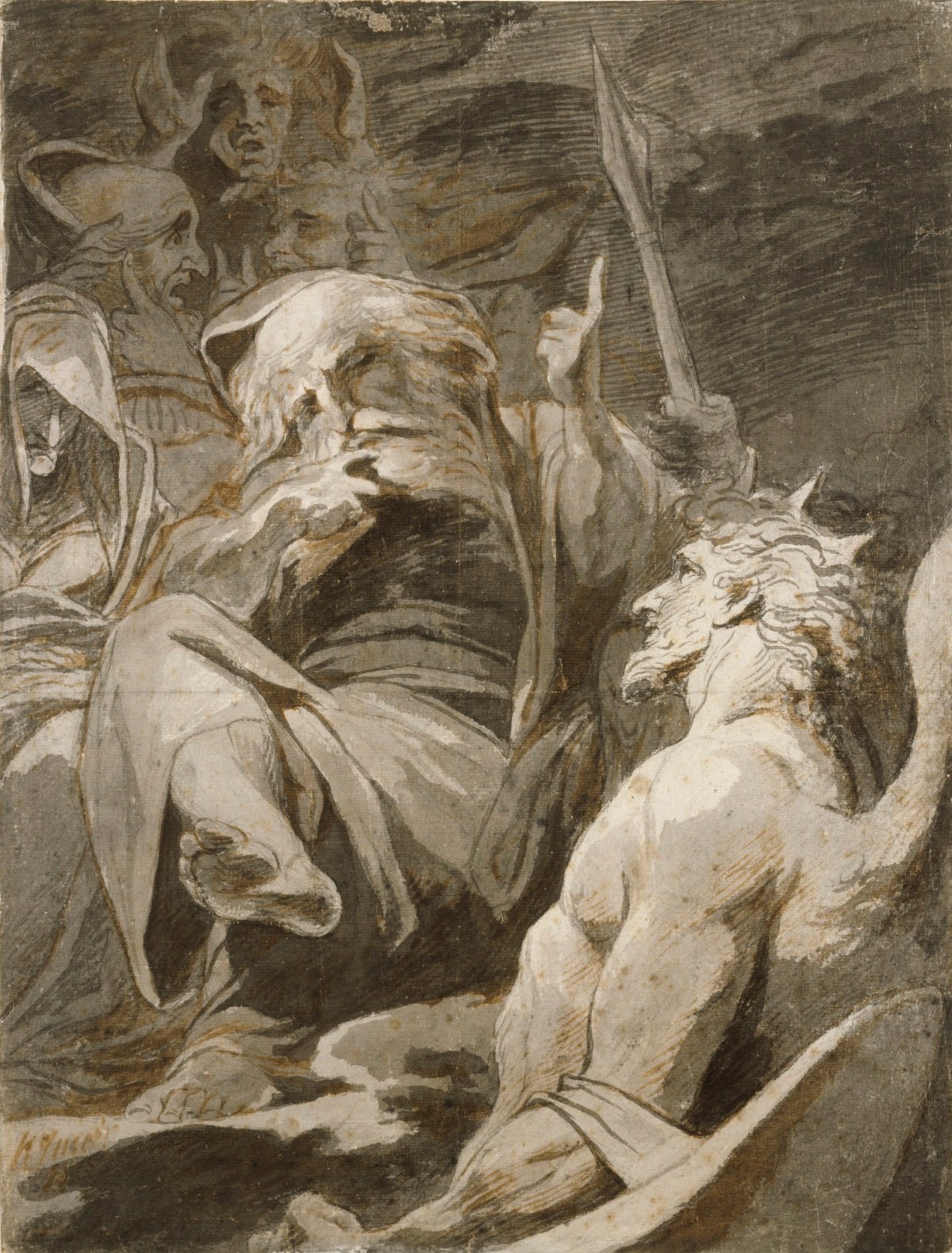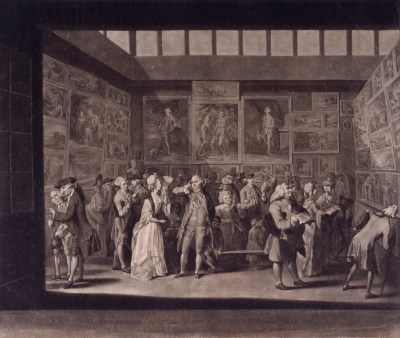
James Barry RA, Satan at the Abode of Chaos and Old Night, c. 1792-95.
Pen and brown and black ink with grey wash over black chalk on laid paper. 554 mm x 417 mm. © Photo: Royal Academy of Arts, London. Photographer: Prudence Cuming Associates Limited.
This image is not available to download. To licence this image for commercial purposes, contact our Picture Library at picturelibrary@royalacademy.org.uk
Satan at the Abode of Chaos and Old Night, c. 1792-95
James Barry RA (1741 - 1806)
RA Collection: Art
This dramatic pen and ink drawing was part of Barry's ambitious but unfinished scheme to illustrate John Milton's epic poem Paradise Lost (1667). Barry embarked on this project in the 1790s, at a time when the works of Milton and Shakespeare enjoyed great popularity in British art. Barry described Milton as 'the first man of genius who was able to make any poetical use of the great personages and imagery of our religion'.
The scene from Book II shows Satan in the realm of Chaos - the abyss separating Heaven and Hell - seeking help in his quest to find and corrupt the new world of mortals. Using thick, quickly-drawn lines, dramatic lighting and an unusually low viewpoint, Barry created a vivid and unconventional image. Chaos, personified as an old man, deliberates while his crone-like consort, Ancient Night, peers out from beneath her hood to fix the viewer with a sinister glare. Barry's Satan, however, is an heroic and humanized figure rather than a monstrous demon. In an age of revolutions, this positive interpretation of the rebel angel reflected the artist's belief in the importance of political liberty.
William L. Pressly has pointed out that the composition of this scene is bold and adventurous in its use of a 'close-up focus and abrupt foreshortening to supply dramatic tension' (Tate Gallery, p. 110), adding that many of Barry's Milton illustrations feature figures pressing 'against the edges as if they were momentarily to burst through them' (Pressly p. 161). Here, in particular, Night is cropped by the left edge of the sheet so that her figure is only partially visible. Barry has also used dappled contrasts between light and dark to heighten the atmosphere of the scene. Pressly has described 'the stark brevity and crude power of the Miltonic drawings', created by Barry's thick, rapidly drawn lines, and has also suggested a link between Barry's experience as a printmaker and his use of hatching and cross- hatching 'independent of any form defining function' (Pressly p.158 ), an effect which can be seen in the background of this work.
It is not clear why the drawing is inscribed with Fuseli's name and this date but it is presumably the result of a mistaken attribution - unless Fuseli owned this work. I thas been suggested that the strokes of brown ink on the image and the signature were added together at a later date. When the drawing was given to the Royal Academy in 1937 it was already attributed to Barry rather than Fuseli although the subject was wrongly identified as one from classical mythology - 'Radamanthus' the unfair judge of Tartarus.
James Barry was born in Cork, Ireland, in 1741 and lived in Dublin and Rome before settling in London where he was elected a Royal Academician in 1773. Barry served as Professor of Painting at the Royal Academy Schools but his vitriolic criticisms of fellow members eventually led to his expulsion in 1799. Nevertheless his artistic achievements were highly regarded and, when he died in 1806, he was buried in St. Paul's Cathedral next to Sir Joshua Reynolds.
Further reading:
William L. Pressly, The Life and Art of James Barry, Yale University Press, New Haven and London, 1981, pp. 153, 154, 202, ill. 113
William L. Pressly, James Barry:The Artist as Hero, Tate Gallery, London, 1983, cat. no. 53, p. 110
Tom Dunne (ed.), James Barry 1741-1806, 'The Great Historical Painter', Crawford Art Gallery, Cork, 2005, pp. 156-163
Object details
554 mm x 417 mm
Start exploring the RA Collection
- Explore art works, paint-smeared palettes, scribbled letters and more...
- Artists and architects have run the RA for 250 years.
Our Collection is a record of them.



